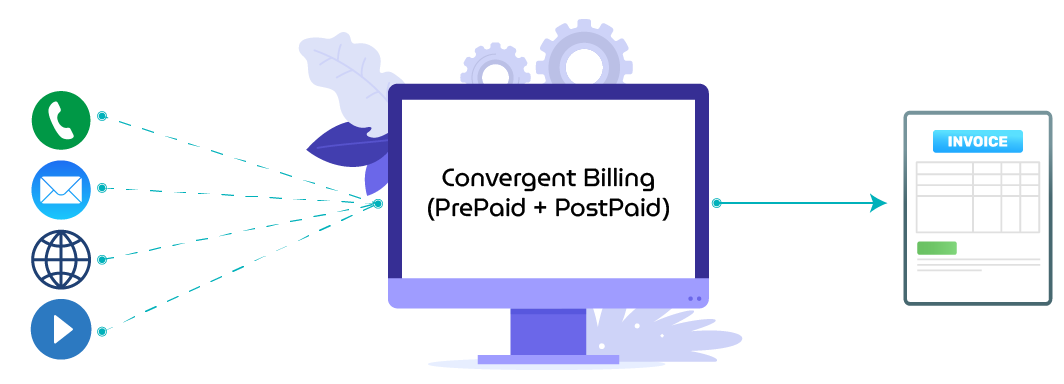Convergent Billing
The telecommunications sector is changing fast, due to that the efficiency and customer satisfaction are extremely important. It is challenging for telecom operators to manage multiple billing systems because different types of services they offer, like voice and data to video and streaming. This might be difficult when they attempt to deliver many services at once. Convergent billing simplifies the billing process and improves the customer experience.
What is Convergent Billing?
- Definition of Convergent Billing
In convergent billing, all service charges are combined on to a single invoice in order to simplify the billing process. It supports a variety of service formats, such as postpaid, prepaid, and digital services. It enhances transparency as well as reliability between service providers and customers.
- Key Components of Convergent Billing Systems
A convergent billing system needs to integrate several components. This includes a charging and rating engine, a customer relationship management platform, and real-time billing. All of these components work together in order to ensure that all services are accurately captured and billed on time.
-
-
- Multiple Service Billing: The platform allows companies to bill for a variety of services such as voice, data, video, and many others.
-
Real-Time Billing Capabilities: This ability to compute and adjust the bill immediately upon service use, which is particularly important for streaming data services, enables billing to occur immediately upon service consumption.
-
CRM Integration: Billing system integration with the CRM system enables better customer data management as well as it allows for a personalised customer experience.
-
- Integration of multiple billing systems
As the name suggests, convergence billing is the process of combining several billing systems into a single complete and comprehensive solution. This reduces the need for multiple systems and interfaces, which are often necessary to manage various types of services. As a result, mistakes are significantly reduced, and the billing process is smoother and more adaptable to customer needs and patterns of use.

Benefits of Convergent Billing|Is Convergent Billing Benefits|How Convergent Billing Can Transform Your Telecom Operations
Traditional billing systems often operate in silos, handling different services separately, which can lead to discrepancies and customer dissatisfaction. In contrast, convergent billing provides a holistic view of the customer’s usage across all services, resulting in a single, consolidated bill. This not only reduces operational complexities but also enhances transparency and trust with customers.
Implementing convergent billing can significantly transform telecom operations in several ways:
-
- A reduction in customer churn: By providing a single, easy-to-understand bill, it improves customer satisfaction and reduces confusion, leading to lower churn rates.
- Efficient Management: It streamlines billing processes, reduces operational costs, and minimizes errors associated with handling multiple billing systems.
- Cash Flow Improvements : Faster billing and better accuracy can improve cash flows by ensuring that revenues from services are quickly realized and discrepancies are minimized.
- Differentiation: Offering a seamless billing experience can be a differentiating factor in a competitive market, attracting new customers and retaining existing ones.
